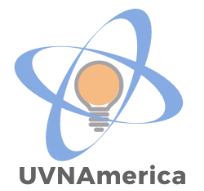
History of UV Light
This is a paragraph. Double-click the text box and begin editing. Use the text editor to customize your text. It's that easy!
UV light was first discovered by Johann Wilhelm Ritter in 1801. In the late 1800s, physicians began to explore the connection between sunlight and health. Just over one hundred years after the Ritter's discovery, Niels Ryberg Finsen was awarded the Nobel Prize in Physiology of Medicine for his work with ultraviolet light and disease. He treated around 300 people suffering from a disfiguring skin disease called lupus vulgaris. His work was based upon previous research showing that light could kill bacteria.
The first use of Photoluminescence Therapy (also called Biophotonic Therapy), which we call Ultraviolet Blood Irradiation (UVBI), was in 1922 by Kurt Naswitis. Naswitis irradiated the blood directly through a shunt. This was in an attempt to irradiate the blood outside the body using a system that would circulate the patient's blood through an irradiation chamber and then back to the patient, Emmet Knott developed the prototype machinery that is still used today. He received his patent on September 11, 1928.
In that same year, Knott irradiated blood from the first human subject; a case of bacterial sepsis. The patient recovered within 24 hours of the treatment. By the summer of 1942, over 6,500 patients had been treated with Photoluminescence Therapy with a greater than 95% success rate, and no harmful side effects. In the forties, Knott made changes in his machinery and the FDA grandfathered in his device.
In 1943 they reported a complete disappearance of viral pneumonia symptoms in 24 to 76 hours following a single treatment; a disappearance of coughing in 3 to 7 days; and clear lung X-Rays in 24 to 96 hours. Around this time, Dr. Virgil Hancock released a paper that reported that Photoluminescence resulted in the following reactions:
- Inactivation of toxins
- Destruction/inhibition of bacteria groweth
- Increased oxygen
- Immunostimulation of cellular/humoral immunity
- Steroid hormone activation
- Decreased platelet aggregation
- Decreased blood vicscosity
- Corticosteriod production stimulation
- Fibrinolysis stimulation
Over the course of 50 years, physicians performed over 300,000 clinical tests that prove the validity of photoluminescence therapy and its curative potential. Most important: not one patient was lost in all these studies.
Only a few individuals practiced UVBI througout the 1950s and 60s. In the 1970's, Yale University developed a low wattage UV light to trigger chemotherapeutic agents (photoluminescence), which led to the approval for use of the Extracorporeal Photopheresis Blood Irradiator, used at Yale. The FDA approval allowed clinical trials on people with HIV and Graft-Versus-Host disease. The trials were extremely successful for HIV/AIDS related Complex, as over half the patients remained HIV negative for 14 to 16 months after the termination of the study. The drawback was that each treatment was expensive and lasted four to five hours.